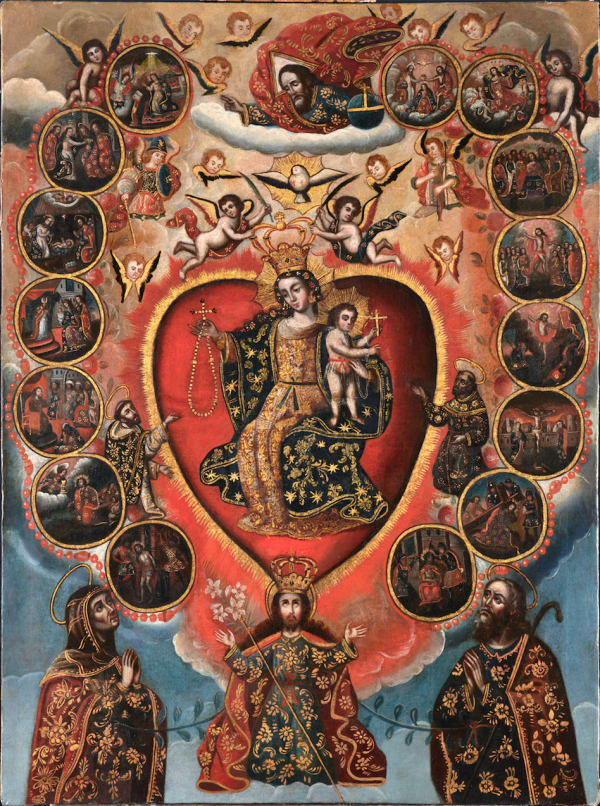As was also the case in Cuzco and Lima, in the first years after the Spanish established themselves in Upper Peru, the late Renaissance influences of the 16th century predominated through Italian painters who had arrived in the New World, spreading to La Paz and Potosí, the latter being the city in which the Jesuit painter Pedro de Vargas [Montilla (Cordoba), 1533 ? – after 1591] settled, himself a disciple of the great master Bernardo Bitti [Camerino (Italy) 1548 – Lima 1610]. The Potosí school of painting saw its stock go up with the emergence of Melchor Pérez de Holguín (1660 ? – 1732 ?), an extraordinary painter with his own style, who imbued his works with great virtuosity and a brilliant palette of colors. One follower of Holguín worth mentioning is Gaspar Miguel de Berrio (Potosí, c. 1706 – c. 1762), who pioneered mestizo painting in Potosí and whose work was a display of the brocateado technique, which consists of applying gilt highlights to clothing, and the saints’ attributes he painted, attaining an astonishing effect. During the entire 18th century a new artistic trend developed whereby European influences were less prominent and indigenous values and roots emerged, combining with Western art to give rise to the so-called 'Mestizo Baroque Style', the greatest expression of Latin American art.





